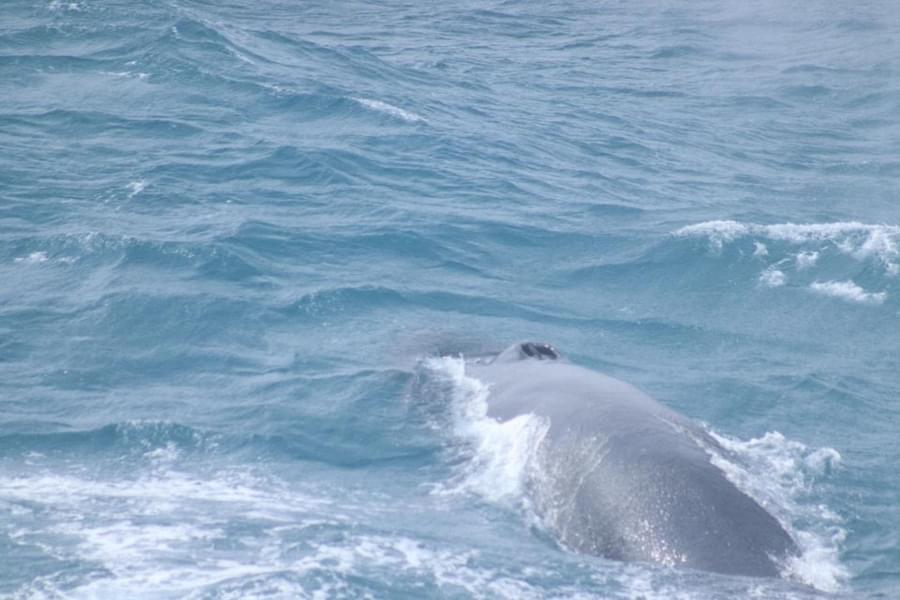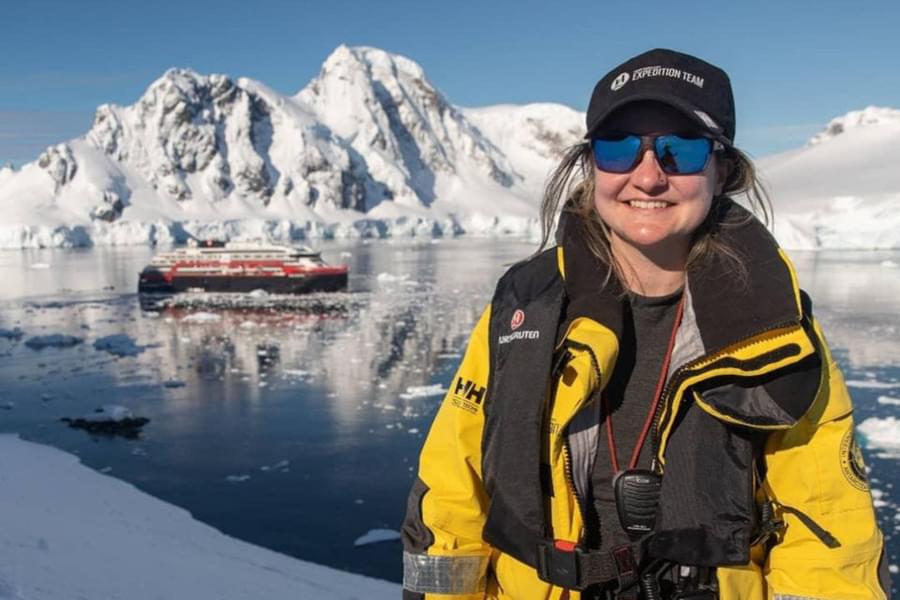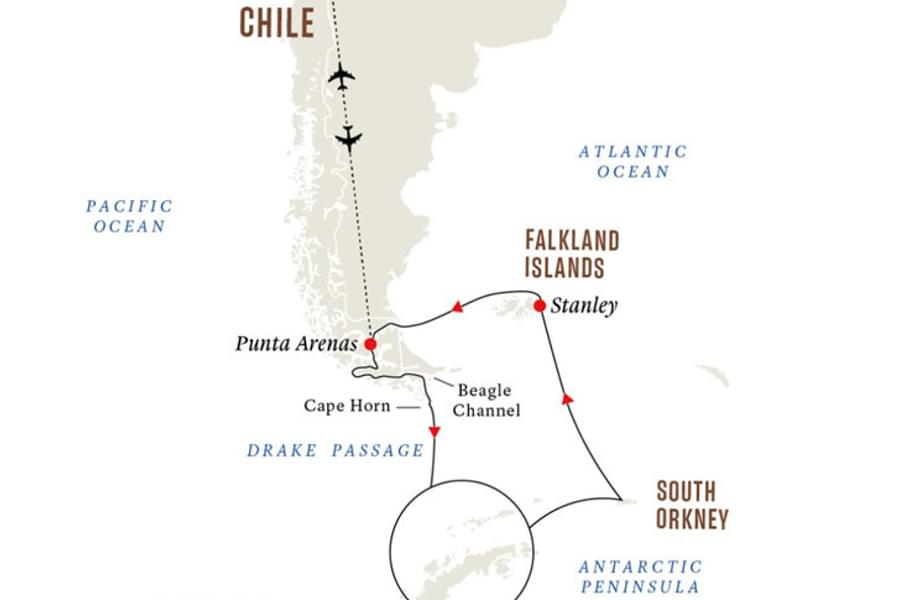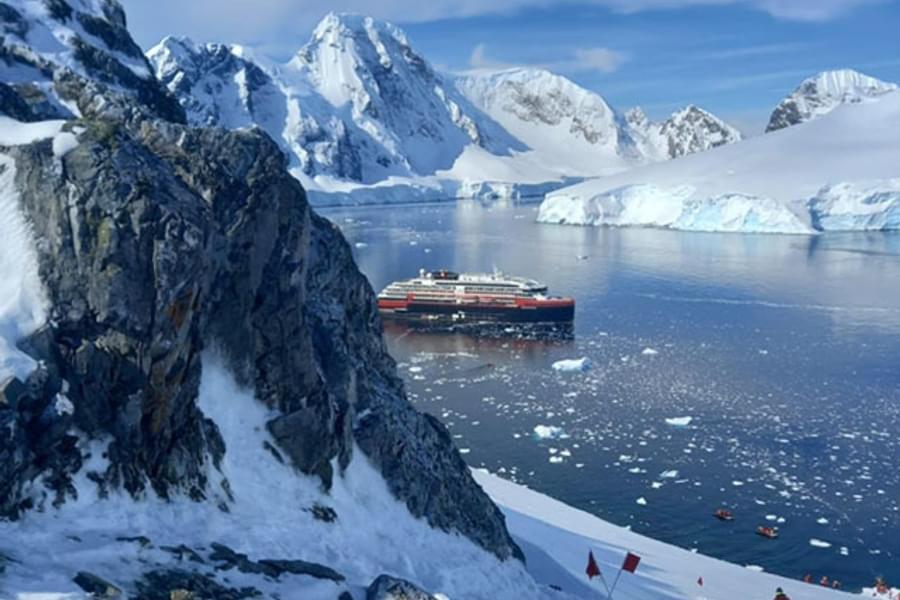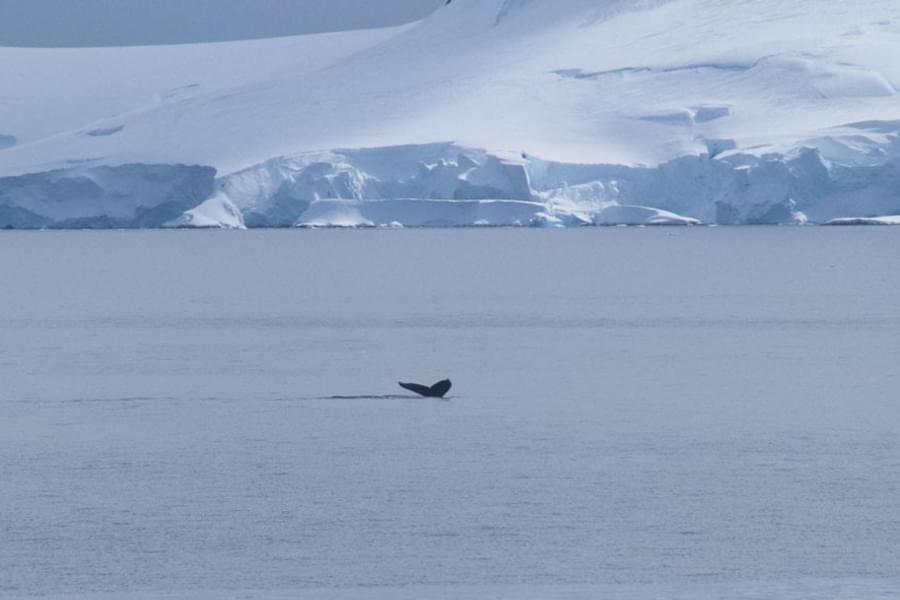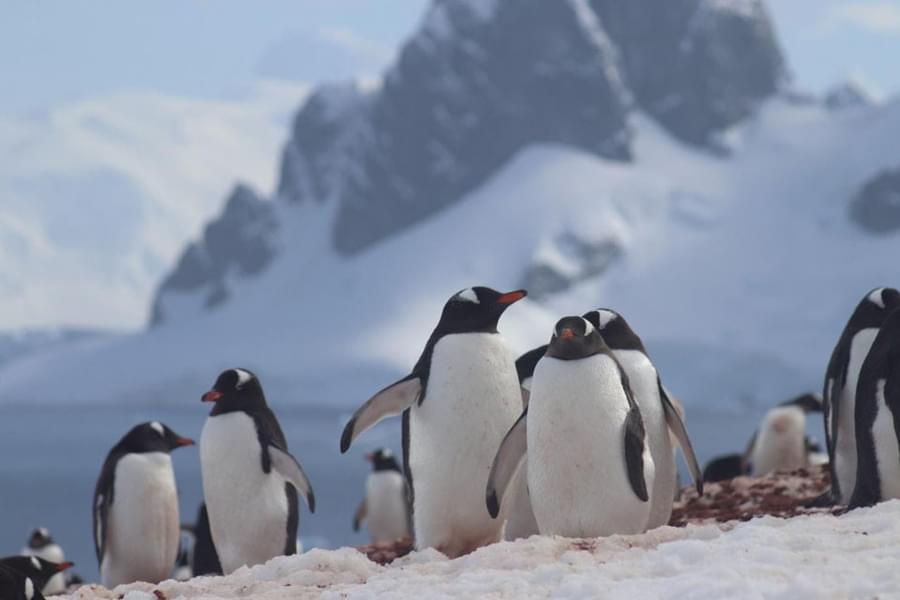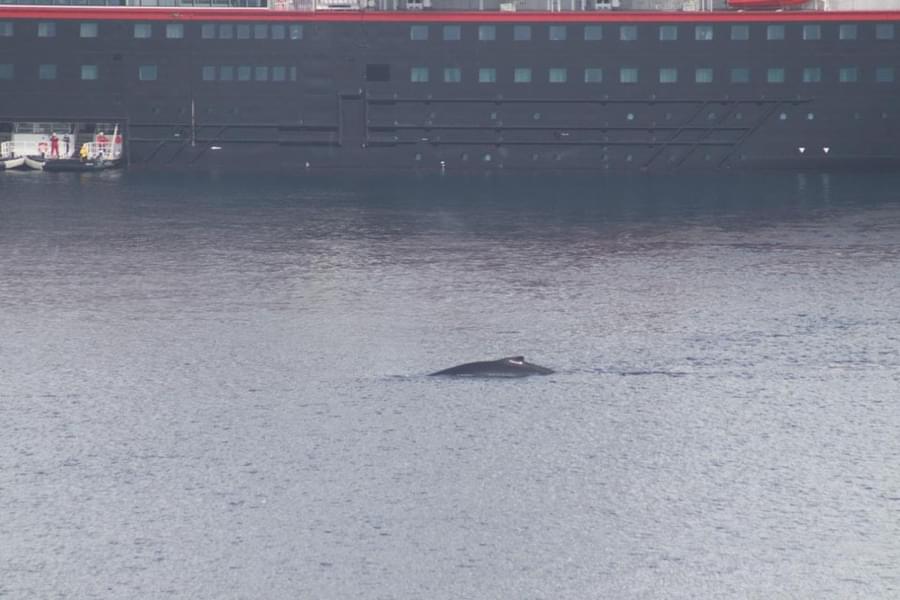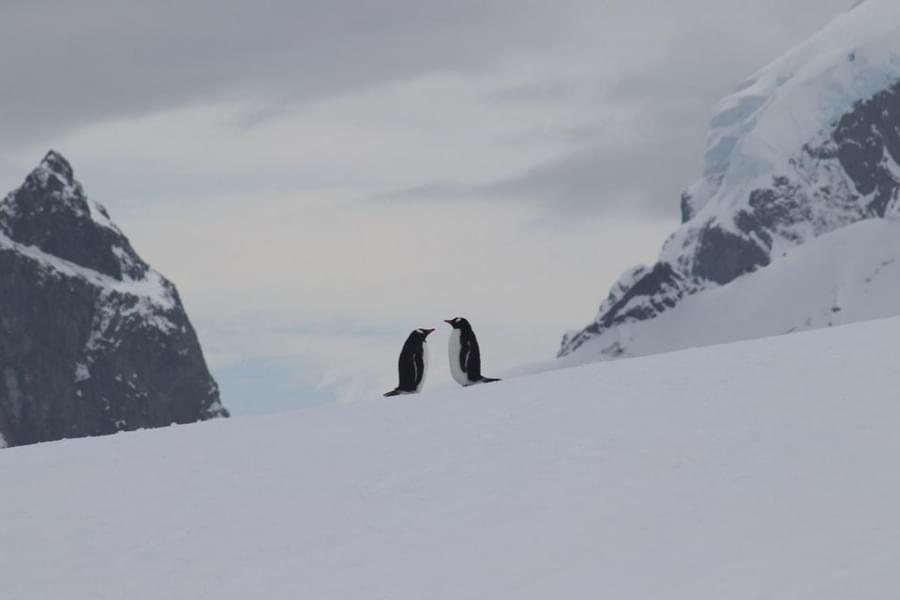Jess reports back on her first cruise as an Ocean Conservationist with ORCA monitoring marine mammals with Hurtigruten.
In 2021 I began working as the Hebrides Wildlife Officer for ORCA, surveying the marine mammals of the West coast of Scotland and engaging with the passengers of CalMac Ferries. It was cold, wet, windy, and exciting, and as the season came to a close in October I was getting ready to snuggle down for the winter and have a rest. Reading books, crocheting, walking the dog, and eating were my main activity plans. But a phone call from ORCA changed all that and before I knew it I was packing my bags and preparing for the trip of a lifetime, to survey marine mammals for ORCA as an Ocean Conservationist with Hurtigruten Expeditions, in Antarctica.
The Ship
The ship that would be my home for four weeks was the MS Roald Amundsen. A Diesel Electric hybrid ship built-in 2019 for the Norwegian tour operators Hurtigruten. The partnership with Hurtigruten and ORCA began in 2019 and staff from ORCA have surveyed on the MS Roald Amundsen, MS Fram, MS Maud, MS Otto Sverup, and MS Fridtjof Nansen. The ship has 11 decks and is 140 meters long, and it’s beautiful, inside and out.
Training in Norway
Before embarking on the Roald Amundsen I was first sent to Bergen in Norway where I spent 4 days training with members of Hurtigruten’s expedition teams. Here we learnt all about how the expedition team works on board and we also did two days of learning how to drive Zodiac boats.
Day 1 – Punta Arenas, Chile. Embarkation day.
After a very long journey from Bergen to Punta Arenas in Chile and many PCR tests later, we finally stepped foot onto the MS Roald Amundsen. The ship is equipped with a state of the art science centre which has every skull, tooth, rock and feather you could imagine. Here there are microscopes for studying plankton, a library of information books, art and activity rooms, and a whale corner!
Day 2 – Chilean Fjords - The Beagle Channel
We woke up sailing the same route that Charles Darwin famously took on the HMS Beagle. It was an incredible landscape. There were no roads, houses, other boats, or any signs of humans at all, just hills upon hills of southern beach tree forests, mountains, waterfalls, and glaciers. A huge Andean condor flew high in the sky and we saw some South American Sea lions and a single dusky dolphin. This is also where I laid eyes on my first ever albatross, the black browed albatross, soaring above the water and impressing the guests.
Day 3 – The Drake Passage
The Drake Passage is a very famous area of ocean between the very bottom of Argentina and Antarctica. It has a fearsome reputation amongst seafarers. Renowned for its rough seas, it is often referred to as ‘The Drake Shake’. It was a bumpy ride but nowhere near as rough as its reputation and we had a fairly peaceful crossing. We even had a fleeting glimpse of a fin whale. Having rough weather makes marine mammal surveying a challenge. You can easily miss a large whale when the swell and waves are over four meters and wind and mist make it extra hard to spot their blows. However windy conditions are great for spotting seabirds, particularly the tube nose family that include albatrosses, petrels, and fulmars. They glide effortlessly in the wind and use it to their advantage. So even if there isn’t a lot of whale action, the birds are always there to entertain.
Day 4 – Half Moon Island
We woke up to find much calmer seas and an icy chill in the air. We arrived at a very dark and snowy Half Moon Island which is located in the South Shetlands, a group of islands just above the Antarctic Peninsula. Half Moon Island is home to thousands of breeding pairs of chinstrap penguins. I was genuinely not prepared to fall in love with the chinstraps the way I did. They are around 25 to 30 inches tall and look like tiny old men.
Day 5 – Orne Harbour
We sailed through the Gerlache Strait on a beautiful sunny day. I had been really excited for this stretch of the journey as it is famous for humpback whales and orcas. The Gerlache strait has the kind of scenery you see in nature documentaries about Antarctica; huge icebergs, glaciers, and mountains. Due to its popularity with humpback whales, it is part of a geo-fenced area which means vessels cannot sail over a speed of 10 knots so to avoid any potential collisions with the whales. I was scared to blink as we weaved through ice in case I missed a splash. Then Sindre, the onboard marine biologist, came to tell he had seen a dark back rolling through the water. We watched and waited at the exact spot he described and sure enough, a whale surfaced. It came closer and closer to the ship and we could see it was a humpback whale. It was a special site as it was the first humpback I had ever seen and it looked spectacular amongst the ice. To share it with teammates and guests also experiencing Antarctica for the first time was really special.
Day 5 – Orne Harbour
We sailed through the Gerlache Strait on a beautiful sunny day. I had been really excited for this stretch of the journey as it is famous for humpback whales and orcas. The Gerlache strait has the kind of scenery you see in nature documentaries about Antarctica; huge icebergs, glaciers, and mountains. Due to its popularity with humpback whales, it is part of a geo-fenced area which means vessels cannot sail over a speed of 10 knots so to avoid any potential collisions with the whales. I was scared to blink as we weaved through ice in case I missed a splash. Then Sindre, the onboard marine biologist, came to tell he had seen a dark back rolling through the water. We watched and waited at the exact spot he described and sure enough, a whale surfaced. It came closer and closer to the ship and we could see it was a humpback whale. It was a special site as it was the first humpback I had ever seen and it looked spectacular amongst the ice. To share it with teammates and guests also experiencing Antarctica for the first time was really special.
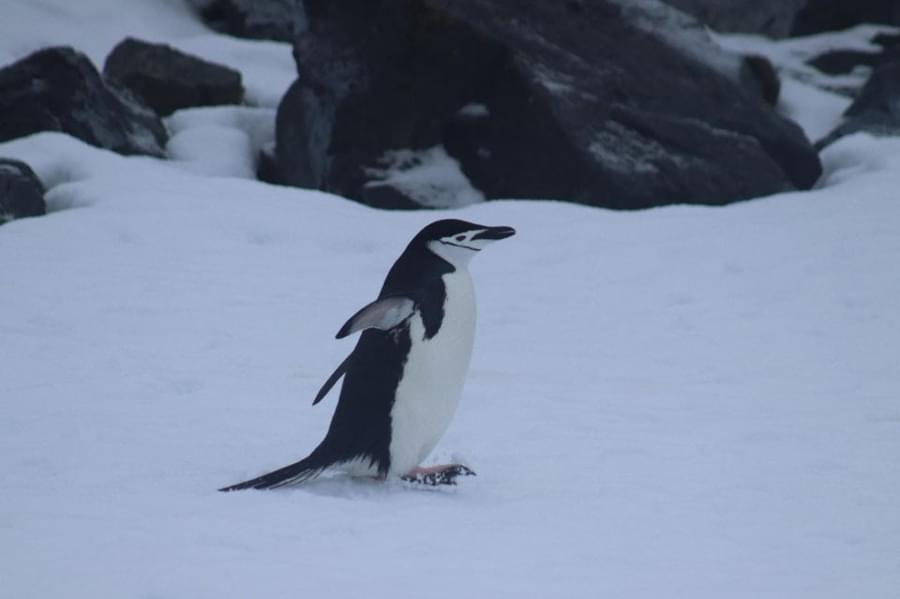
In the afternoon I took my first step onto the Antarctic continent at Orne Harbour. We climbed to the top of a hill in deep snow and were rewarded with a spectacular view. Here we got to enjoy another chinstrap rookery and we saw more humpbacks from the top.
Day 6 – Danco Island
We climbed up to a spot on Danco Island to see an incredibly scenic Gentoo penguin colony. The birds were courting, fighting, building nests, and defending their space from predators like skuas and other penguins. From high up on the hill, we saw a humpback whale come very close to the ship.
Day 7 – Duse Bay Sea Ice Landing
We passed through the Antarctic sound early in the morning and high winds blew our landing plans at a site called Brown Bluff out of the window. So instead our Captain steered us around the corner to a spot called Duse Bay where we got a spectacular view of sea ice covering the Weddell Sea. Everybody was enjoying the unique view of the sea ice and watching the seals sleeping on the top.
Then far away at the sea ice edge a seal flew from the water and wiggled across the ice just as huge black dorsal fins rose up out of the water. They were orcas, the first I had ever seen and they were hunting seals along the sea ice!
These orcas were Type B, a large eco-type of orca that specialises in hunting seals.
I was still buzzing from the morning orca sighting when the expedition team were called to a meeting. The landing at Brown Bluff had been cancelled but a new and unique opportunity for a special landing was possible and so the team got dressed and ready to attempt to land on the sea ice!
First, the expedition team had to test the thickness of the ice using a drill to make sure it was safe to land on. The ice was perfect – around 1m thick and 40cm thick at the edge.
Standing on top of the sea ice was a surreal moment for me. What with the orca drama in the morning and standing on a frozen ocean in the afternoon, I’d say it was one of the craziest days of my life.
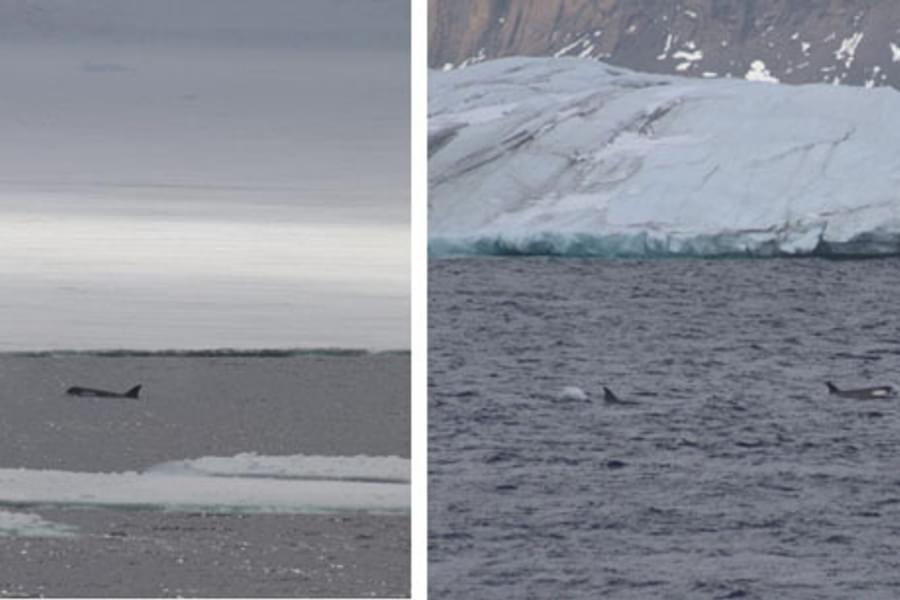
Day 8 – Point Wild, Elephant Island
On the morning we had a special opportunity to sail past Elephant Island and the historic site Point Wild. Point Wild was named after Frank Wild, the leader of the party of men left on Elephant Island in Shackleton’s Endurance expedition. This was a very atmospheric place and it was remarkable to see the exact spot where 22 men survived for 4 months, sheltering in upturned life boats and surviving on supply rations and penguins.
In the afternoon we hit the open ocean on our way to an area where guests were hoping to see the solar eclipse. Through the wind and spray we saw lots of whale blows and hundreds of birds. The wind was wild as we sailed through a mass feeding event where around twenty large whales including fin whales, humpbacks, and minke whales, were feeding with the birds.
There were whales in every direction and this was an excellent way to finish our first trip to Antarctica. In the next blog I will write all about our journey to Las Malvinas, aka the Falkland Islands and the incredible marine wildlife we encountered there.
